Search Posts
Recent Posts
- Vinny Paz to be inducted TODAY into the International Boxing Hall of Fame – CES Boxing June 7, 2025
- In the News… quick recap of the week’s news (6.7.25) June 7, 2025
- Burn with Kearns: Strong without the spend: How scraps became strength tools – Kevin Kearns June 7, 2025
- Rhode Island Weather for June 7, 2025 – Jack Donnelly June 7, 2025
- How to advocate for threatened properties: The Heritage Alliance of Pawtucket June 7, 2025
Categories
Subscribe!
Thanks for subscribing! Please check your email for further instructions.
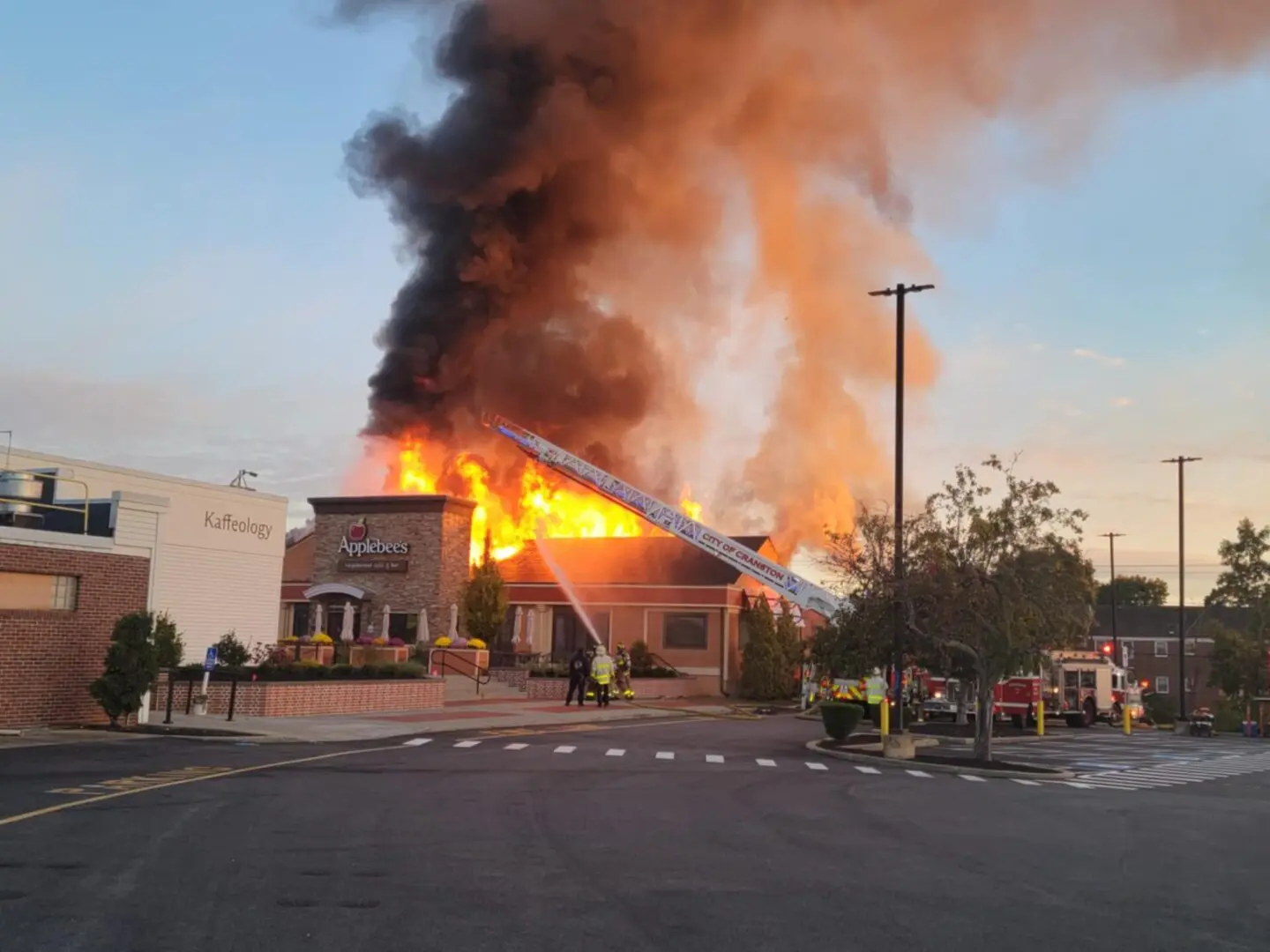
Applebee’s anchor for Garden City in Cranston brings attention on restaurant fires
Photo, top: Silvia Louro, resident, Garden City, Cranston
“I’m grateful everyone is safe and sound, and our firefighters are safe, “said Cranston Mayor Hopkins. That was the final word from a late morning gathering at the site of a “total loss” fire at the Applebee’s Restaurant at the far end of Garden City Shopping Center.
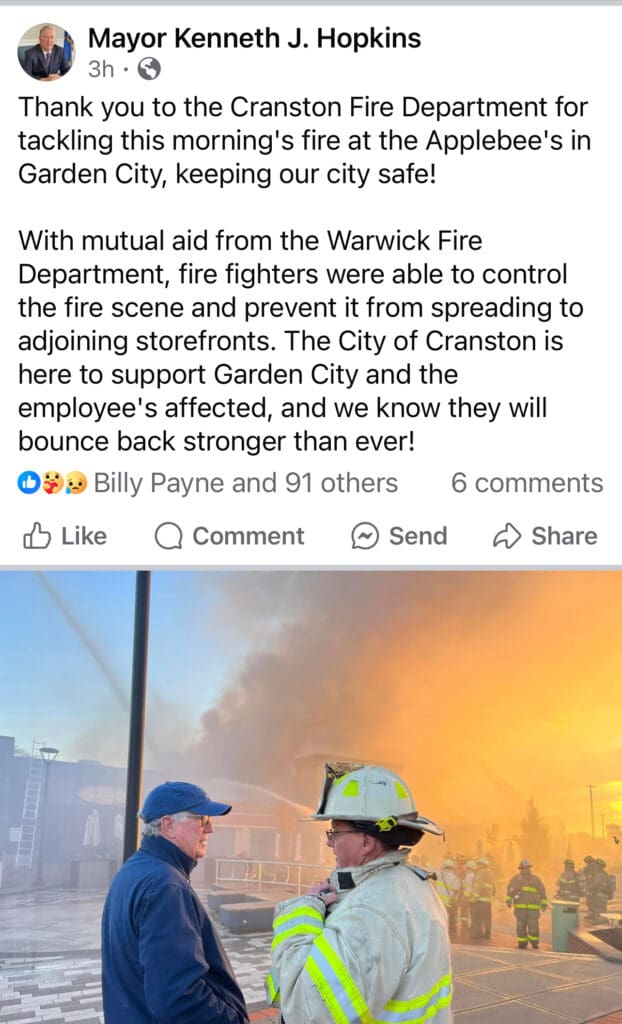
Starting undetected and with a head start, the fire is informally called a “grease fire” and was primarily restricted to the back of the building, near the ventilation and air conditioning system, until the roof caved in and all personnel were ordered out of the building. After the fire was initially tamped down rather quickly, it went into a second, even more rigorous plume of smoke, flames spreading more to the front of the building and then to the side, with the wall shared with Bistro 22.
The brick facade of the end-building of that strip of the Center probably aided in the fire not spreading more. Clearly, water and smoke damage will be impacting the closest businesses to them. Fire walls were credited by the Cranston Fire Department for helping contain the fire primarily to the one business.
–
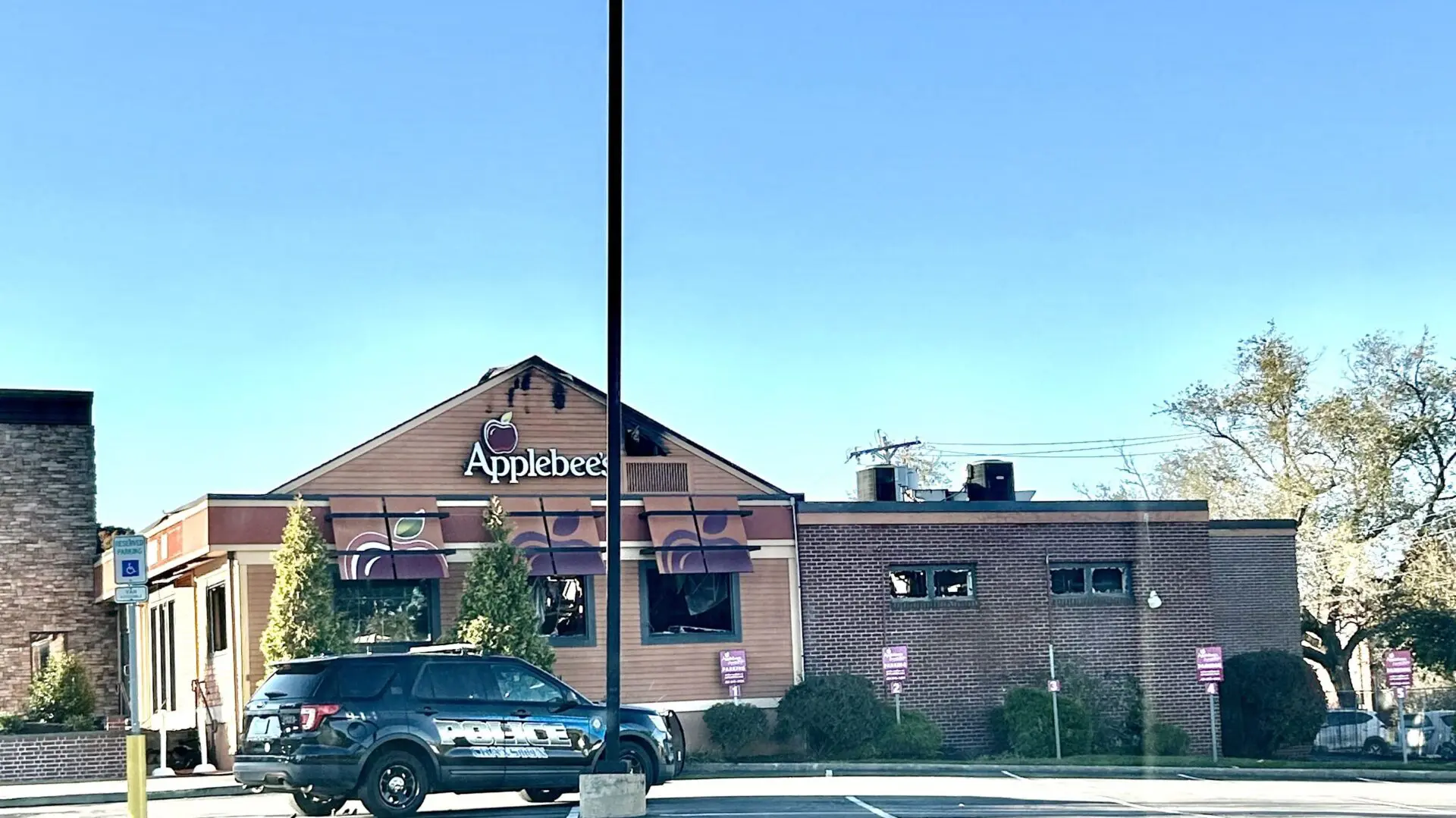
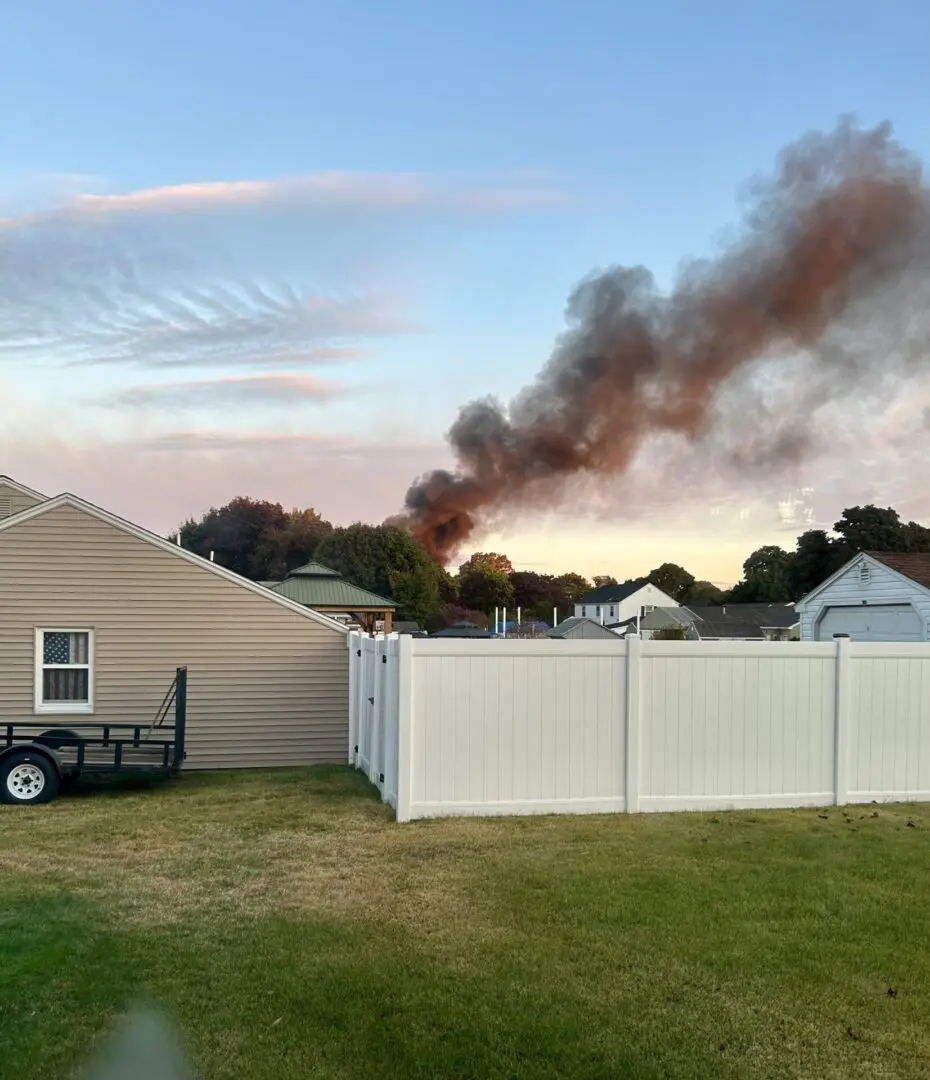
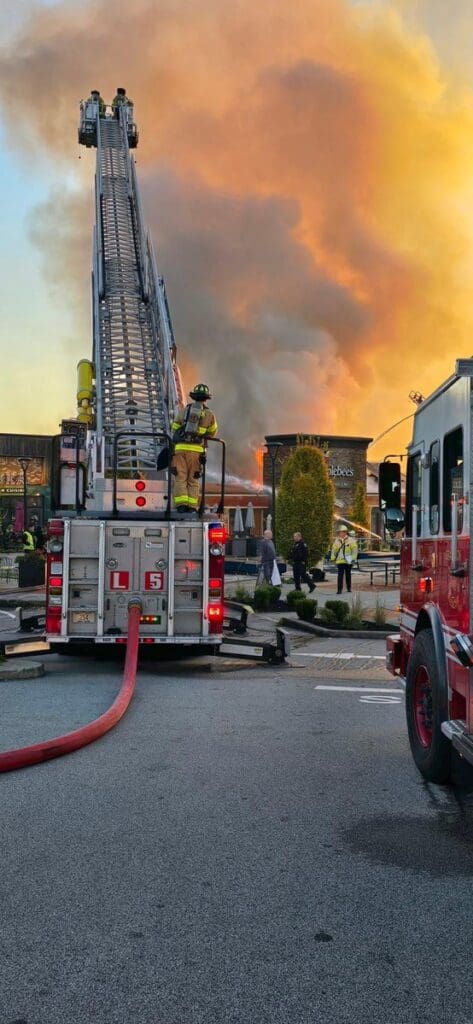
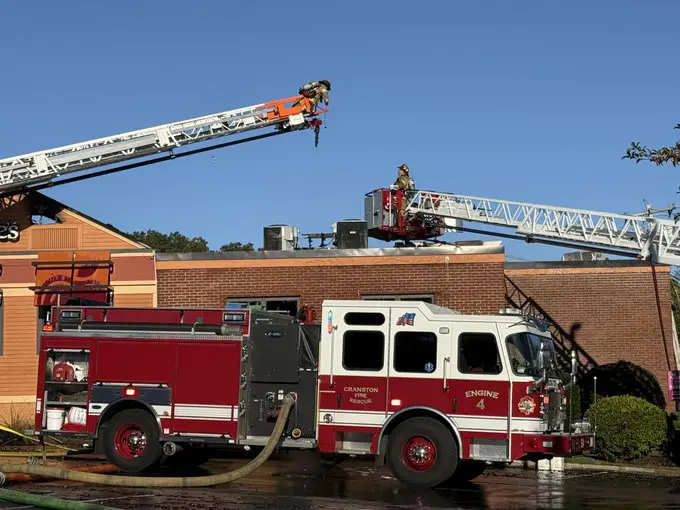
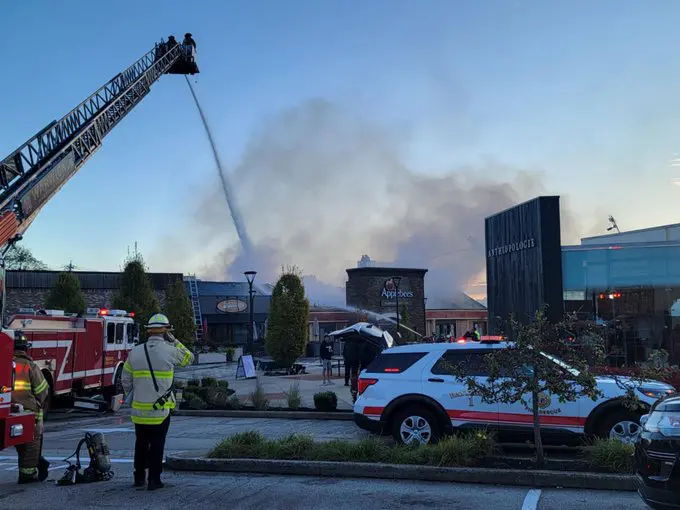
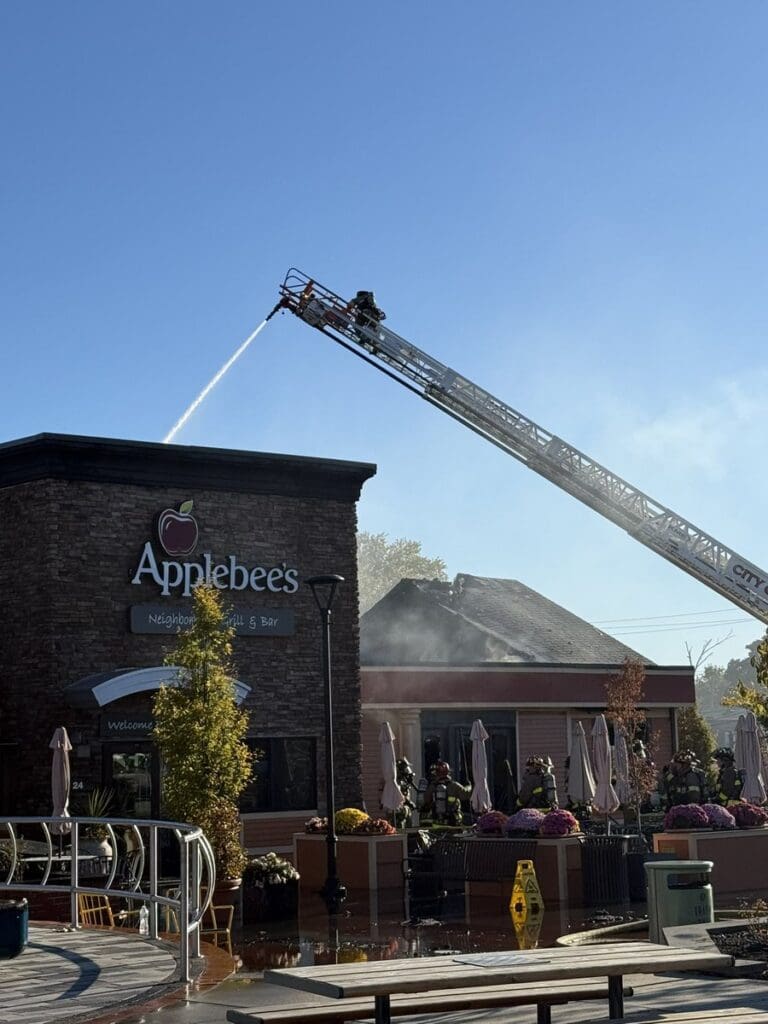
Left standing were the cafe umbrellas and the mums!
Recently we have read of fires that destroyed the Block Island restaurant, and most recently damaged the Waterman Grill, in the midst of doing two weddings, and will now be closed for a month for renovations.
Garden City Center is managed by WS Development which says they have “developed over 100 properties comprising 22+ million square feet across 13 states”. We have reached out to WS Development for comment.
RI Hospitality Association
We requested a comment from the RI Hospitality Association: “Our thoughts are with the affected associates and businesses. The Rhode Island Hospitality Association is committed to supporting impacted employees through the RI Hospitality Employee Relief Fund. We also offer comprehensive training and retraining on closing protocols, as well as Standard Operating Procedure templates and checklists for member establishments.” – Farouk Rajab, President/CEO.
How many fires?
The Federal Emergency Management Agency (FEMA) estimates 5,900 restaurant building fires are reported to U.S. fire departments each year – and cause an estimated average of 75 injuries and $172 million in property loss. However, this data is old, documented in 2009.
What are the causes?
Restaurant fires can be caused by a number of factors, including:
- Cooking: The leading cause of restaurant fires, accounting for 57% of them. Cooking equipment, such as grease traps, can produce grease-laden vapors that are highly flammable.
- Electrical issues: Faulty appliances, worn wiring, and improper use of electrical outlets can cause fires. Electrical malfunctions are the leading cause of larger, nonconfined restaurant fires.
- Heating: Heating equipment is responsible for 10% of restaurant fires.
- Smoking: Smoking is responsible for 7% of restaurant fires, and many smoking fires start near trash cans.
- Arson: Arson is responsible for 5% of restaurant fires.
FEMA also states what businesses have the most fires?
Businesses that focus on or do a lot of cooking are a top risk for fires.
Grease is the primary cause of kitchen fires, as it can build up on everything including the ducts, filters, and hoods. The combination of the grease buildup and the high heat of the kitchen appliances can cause a fire to ignite.
To reduce the risk of fire, restaurants can:
- Install smoke detectors and fire alarms throughout the restaurant, including the kitchen, dining rooms, pantry, storage areas, and restrooms
- Regularly clean grease traps and other cooking equipment
- Develop an emergency action plan and train employees on what to do in the event of a fire
- Obtain a separate open flame permit if using candles
- Ensure that exits and signage comply with state or local fire codes
Merchants Insurance Group provides tips on:
Cooking System Cleanings
- Oven hoods pose a substantial fire risk if not adequately cleaned and maintained. In addition to nightly cleaning, a more thorough cleaning is necessary on a regular schedule.
- Fires can spread when flames get into the kitchen’s ductwork and exhaust system, which are the vents and fans behind ovens and stoves that extract flammable vapors and smoke. These items typically have much grease buildup, which is why it’s critical to clean them regularly.
- Clean the grease. Make sure your staff cleans the exhaust hoods, since grease buildup restricts air flow. Clean grease from work surfaces, walls and equipment such as ranges, grills, vents and filters.
They also recommend Staff Training:
When your staff receives regular, comprehensive training for fire safety and prevention, they can keep your restaurant safe.
- Staff training is critical. Conduct complete, hands-on training with your employees about what to do in case of a fire, from proper use and location of fire extinguishers, to methods for safely evacuating people from the building. Your local fire department may be able to help with training.
- Make sure staff removes ashes from wood- and charcoal-burning ovens daily. The ashes should be kept outside in metal bins 10 or more feet from buildings and flammable materials.
- Guarantee clean facilities to avoid fires. Store paper products, fabric materials, cardboard boxes and food away from heat and cooking equipment, and ensure that dirty rags, trash, and flammable materials are removed at least once a day.
- Make sure cigarettes are extinguished before disposing of in a trash receptacle, and never allow employees to smoke in or near storage areas.
- Check emergency and exit lighting. Main power may be lost during a fire. Regularly test emergency and exit lighting to ensure backup lighting work properly, which will allow patrons and staff to safely exit the premises.
- And, don’t forget about insurance for your restaurant

What time did fire start? Does anyone have that information?
Around 430am. It had been festering since closing time.